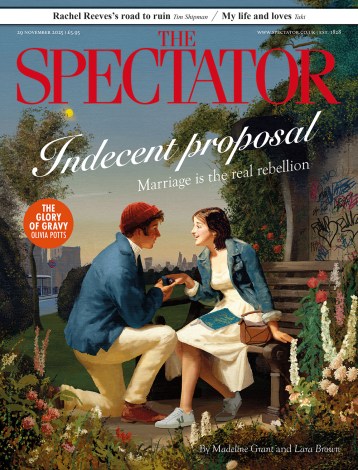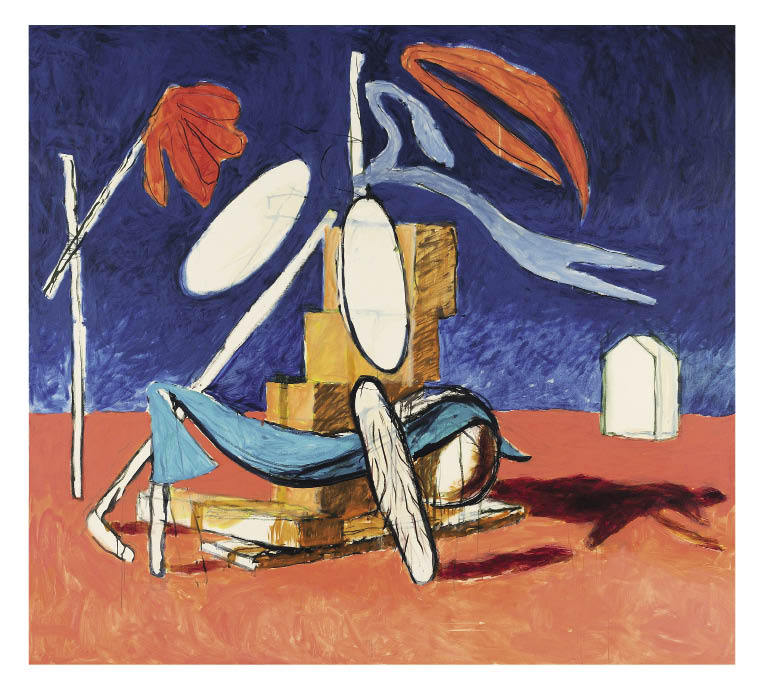Victor Willing (1928–88) is perhaps the least classifiable of the brilliant early-1950s Slade generation, which includes his wife Paula Rego.
Victor Willing (1928–88) is perhaps the least classifiable of the brilliant early-1950s Slade generation, which includes his wife Paula Rego. So it is uniquely appropriate that this first major posthumous exhibition should be at the beautiful museum built in her honour and opened last year.
Willing’s career is dramatically divided. In his twenties he was briefly successful with portraits and still-lives. Then there is a blank 20 years before a last decade of remarkable imaginative paintings, when his art, in Paula Rego’s words, ‘moves backwards and forwards between the figurative and the abstract, the funny and the disturbing’.
Willing’s earliest childhood was spent at an army camp in Egypt. He did national service, whose monasticism he enjoyed, then went to the Slade, where his contemporaries regarded him as the coming man. ‘He was so brainy he was amazing,’ Craigie Aitchison remembered. Paula Rego recalls, ‘People were frightened of him. He walked very well, with a great deal of bravado, and he was a very good jazz dancer.’
In 1955 he made a dazzling debut at the Hanover Gallery, the hottest ticket in town. He had married his childhood sweetheart, he was friends with the glamorous likes of Bacon and Rodrigo Moynihan. Yet Willing did not have another exhibition until 1978. In the intervening years he ran off to marry and settle with Paula Rego in Portugal, where her career burgeoned and his eventually ceased. He was diagnosed with multiple sclerosis; tried, and failed, to save the Rego family business and, in the mid-1970s, returned with his wife and three children to live in London. At this low point he resumed painting. As he later advised his son, the film director Nick Willing, ‘You’re only ever really good when you’re too young to know better, or too old to care what people think.’
Inspiration came from momentary, unforeseen ‘visions’ in states of reverie. As soon as they dissolved, he jotted them down as drawings. ‘Lay people always tend to stress the importance of training; no, the difficulty is to do something exclusive to ourselves,’ he said. The visions did that for him: ‘Nobody else has our dreams.’
The show starts with a bang, the main gallery boldly divided between early and late pictures. Willing’s ambition was always to paint with the spontaneity of drawing, but it is in the visions that his imagination takes wing. Two of the finest confront one another: the triptych ‘Place’, 1976–78, and the Tate’s ‘Place with a Red Thing’, 1979. There is a hot desert feel to ‘Place’, a hut in a walled enclosure, with its echoes of his peripatetic life as an army child and the military need to travel light. As with many of the late paintings, a human presence is palpable but unseen. The selection gives due prominence to the drawings. It is instructive to see the modifications in the paintings. In the painted version of the ‘red thing’, what appears to be blood spatters, drips and stains the ground, suggesting the flayed tail of a whale.
The visions petered out by the 1980s but they had served their liberating purpose. A large and magnificent trio of paintings inspired by Jacques Callot’s etchings of the Thirty Years War and Picasso’s physical infatuation with the voluptuous Marie-Thérèse Walter meet in ‘Callot: Harridan’, 1984, a darkly humorous dismemberment of a hairy-legged crone that vents disgust with age. Humour also underlies a final series of imaginative head-and-shoulder portraits, some of them outright caricatures. ‘Self-Portrait at 70’, 1987 (Willing died at 60), is a haunting exception: the blue of the unseeing eyes the same as the blue beyond, as if the craggy head is void. Lila Nunez, today Paula Rego’s principal model, was his nurse. Under his exact instruction she mixed the colours and applied the backgrounds. Then he painted the heads, paralysis forcing him to anchor the brush in his mouth.
Some of Paula Rego’s rarely, if ever, exhibited late-1960s/70s collages, drawings, dolls and an exquisite, witty piece of embroidery make a perfect coda to the main event. At the opening she was given the keys to Cascais and on 20 October she receives her damehood from HM the Queen. In one of Willing’s large oils, the reflection of a triangle in a mirror is prophetically the exact colour and shape of Casa das Histórias’s oast house-like twin towers. ‘Mum and Dad talked about painting all the time,’ says their daughter, the writer Cas Willing. That conversation is unending.






Comments